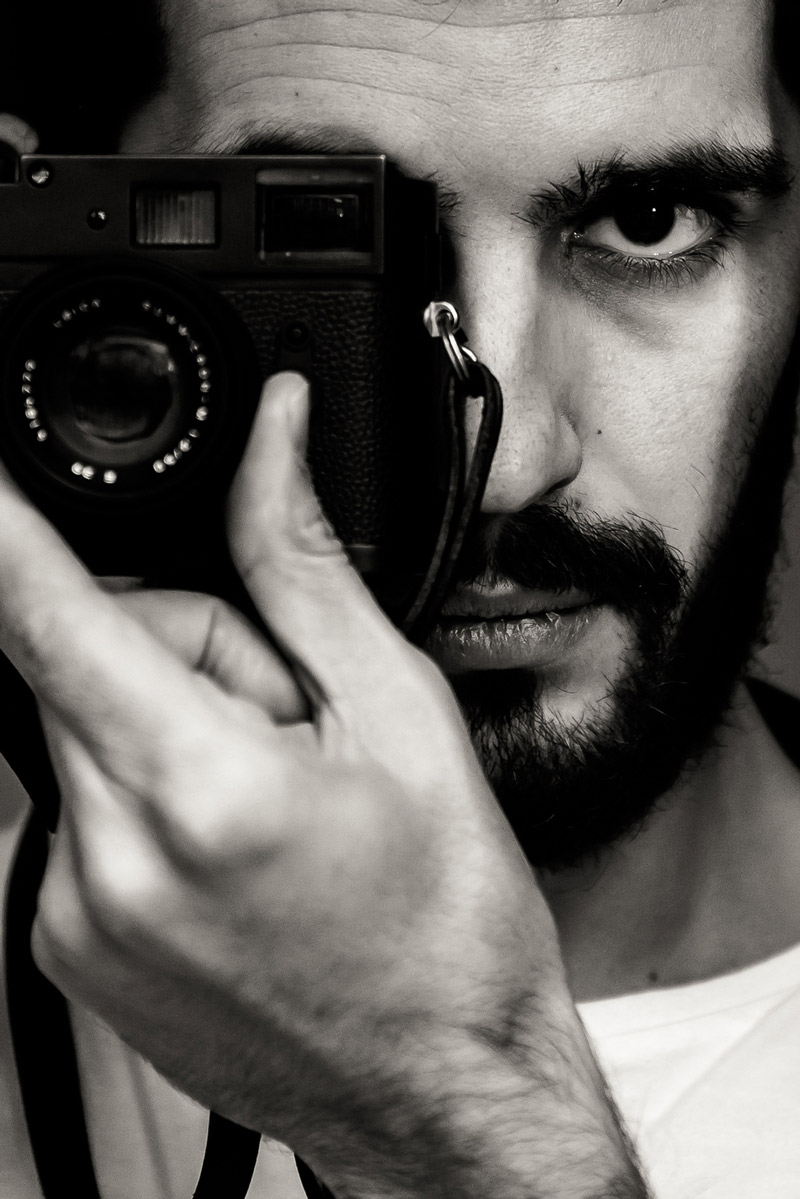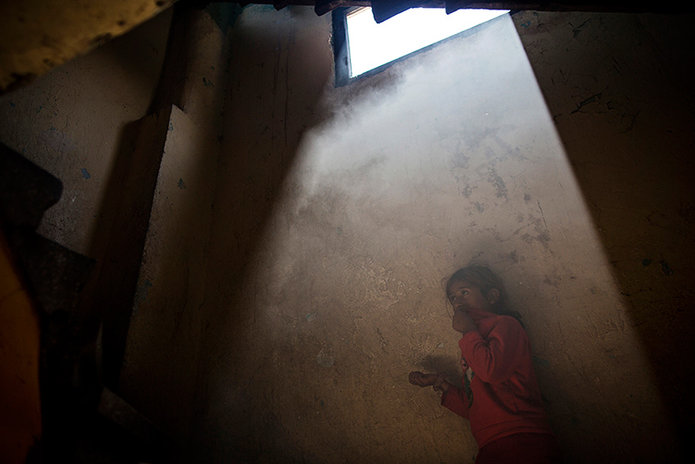Daniel Rodrigues
Mit den Fotostrecken »Syrian Refugees in Istanbul« und »Underground in Tehran« von Daniel Rodrigues startet unsere Blog-Serie über die Arbeit portugiesischer Fotografen, auf die wir im Rahmen unserer Reise und der Arbeit am Slanted Magazin #27 – Portugal aufmerksam geworden sind. Wir haben Daniel ein paar Fragen gestellt und wünschen euch viel Spaß beim Entdecken seiner Arbeiten.
Aus der Serie: “Syrian Refugees in Istanbul”
In your report “Syrian Refugees in Istanbul” you investigated and showed the living conditions of Syrian refugees in Turkey. How did you become aware of the refugees’ situation that made you decide to photograph in / around Istanbul?
The refugees were and still are an important topical issue. And I wanted to do something about it. Before going to Iran I was five days in Istanbul because a colleague told me that were many Syrians there. I’ve been searching the area after arriving until I found that neighborhood where they were there to live in horrible conditions.
Aus der Serie: “Syrian Refugees in Istanbul”
Your very intimate pictures let us assume you were an insider for days / weeks / months (?) – How did you get so “close?”
The work was performed in 4–5 days. I would like to have stayed longer but unfortunately had scheduled trip to Iran. But I have this facility in getting me closer to people quickly. Show confidence. And that’s important. Because we note on the photos. How do I get? Before you start taking pictures it is very important to know the people. know their stories. Then yes, I start taking pictures. And then I’ve got to trust them because they know me.
Aus der Serie: “Syrian Refugees in Istanbul”
You seem to be fascinated by the Arabic speaking and Muslim World, also in other reportages. Is that true and how did you become so interested? Do you speak the language(s), how do you communicate?
Not only in the Muslim World. I am fascinated by all the different cultures from mine. One thing I love about my job is that I get to meet and portray other cultures. Other people! And that’s fascinating!
Aus der Serie: “Syrian Refugees in Istanbul”
Do you stay in touch with your "objects" (the people you photographed) after the project? If so, did your photographs have any influence on their lifes that you are aware of?
Many of them I get. But most over time end up “losing touch.” But there is work that I know have influence. As the case of the Awá Guajá. The most threatened tribe of the world. I know there were a lot of people want to help after I have done the work.
Aus der Serie “Underground in Tehran”
In “Underground in Tehran” you show a lot of people living the “western” life-style, especially women without the veil or burka. How did you get so close? Aren’t the people you show afraid of being shown at infringement of the Iranian law? How did you get their clearance?
The secret lies in the confidence that I pass to people! As I mentioned earlier is very important to first know their stories, talk to them, and to talk to them about you. This is very important. Create a trust. After that it’s easier to be closer to the subject. And though they may take risks in appearing in photographs, they also feel the need to show the reality of their country.
Aus der Serie “Underground in Tehran”
When did you take these pictures (Istanbul, Tehran)? And where have they been published?
The photos were taken in June 2015. They were published in Die Welt in Germany, Expresso Magazine and News Magazine in Portugal.
Thank you for the interview.
Aus der Serie “Underground in Tehran”
Aus der Serie “Underground in Tehran”
Aus der Serie “Underground in Tehran”
Der 1987 in Frankreich geborene Portugiese Daniel Rodrigues lebt seit seinem zehnten Lebensjahr in der Nähe von Porto in Portugal und arbeitet als freischaffender Fotograf in der ganzen Welt. Seine Karriere als professioneller Fotograf begann 2010 nach seinem Abschluss am Portuguese Institute of Photography, mit der Arbeit bei der Portugiesischen Zeitung Correio da Manhã und einer internationalen Fotoagentur, wo er für die Fotos in verschiedenen Zeitungen verantwortlich war. 2013 gewann er den ersten Platz beim World Press Photo, Daily Life category und 2015 belegte er den dritten Platz als Photographer of the Year in POYi. Bis jetzt wurden seine Bilder in der The New York Times, The Wall Street Journal, The Washington Post, Helsingin Sanomat, Die Welt, Daily Mail, CNN, BBC, Folha de São Paulo, Courrier Internacional, Expresso, Visão Magazine und vielen anderen internationalen Publikationen veröffentlicht.










